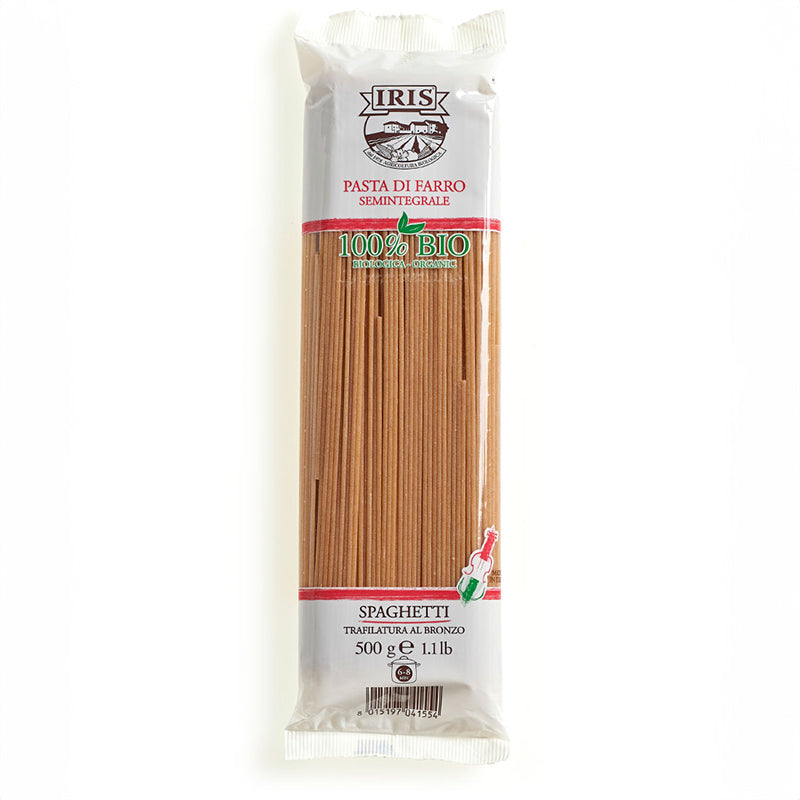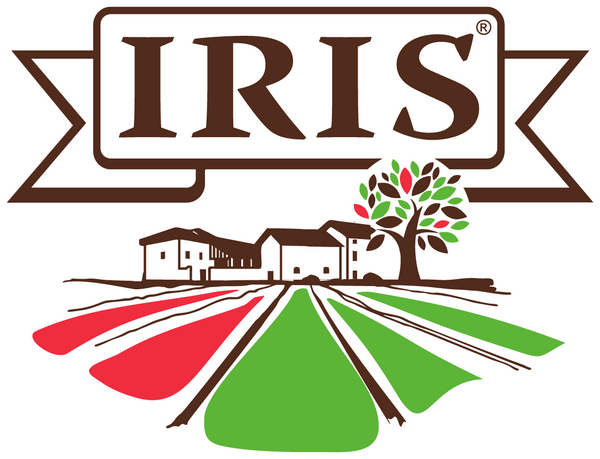COOP. IRIS
IRIS Bio Semi-wholemeal spelt spaghetti
IRIS Bio Semi-wholemeal spelt spaghetti
Couldn't load pickup availability
Share
Semi-wholemeal spelt spaghetti, triticum dicoccum (durum) variety, this type of spelt does not overcook, cultivated by the certified Italian organic agricultural supply chain IRIS. Triticum spelt is one of the oldest cereals, suitable for those who have difficulty digesting traditional pasta. During milling, the fibre is partially retained, which is good for health and enhances the taste. Excellent when cooked. IRIS pasta is bronze-drawn and produced in a pasta factory built using green building techniques. The production process is classic, respecting optimal times and temperatures to maintain all nutritional content.
Prodotto ottenuto dall’impasto, trafilazione ed essicazione di sfarinato di faro ed acqua / Product obtained form the dough-kneading, drowing of half emmer flour and water
Conservare in luogo fresco e asciutto, lontano da farine, riso e legumi, possibilmente al riparo dalla luce, 6°C < T < 20°C
Keep in a cool and dry place, far from flour, rice and legumes, possibly keep out of the light, 6°C < T < 20°C
36 mesi nelle condizioni sopra elencate/36 months under the advised storage conditions
Valori nutrizionali medi per 100 g (Reg. CE 1169/2011)/ Medium nutritional values for 100 g (EC Reg. 1169/2011
Luogo di produzione Italia / Origine materie prime: Agricoltura Biologica – Paese di molitura Italia
Energia/ Energy 1521KJ
Energia/ Energy 359 kcal
Grassi/ Fat 1,5 g
di cui / of which
Acidi grassi saturi/ Saturates 0,5 g
Carboidrati/ Carbohydrate 76 g
di cui / of which
Zuccheri/ Sugars 2,1 g
Fibre/ Fibre 3,4 g
Proteine/ Protein 12 g
Sale/ Salt (NaX2.5) 0,01 g
Allergeni/Allergens Cereali contenenti glutine (cioè grano, segale,orzo,avena, farro, kamut o i loro ceppi ibridati) e prodotti
derivati /Cereals containing gluten (i.e. wheat, rye,barley, oats, spelt, kamut or their hybridised strains)and products thereof
Presente nel prodotto come ingrediente/Present in the product as ingredient
Può contenere trace di soia, senape/ Possible cross contamination in traces of soy and mustard




